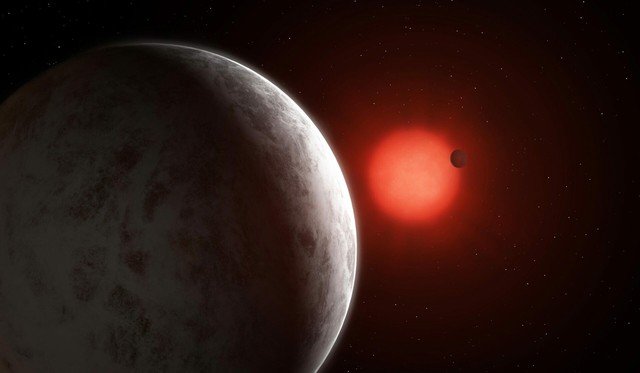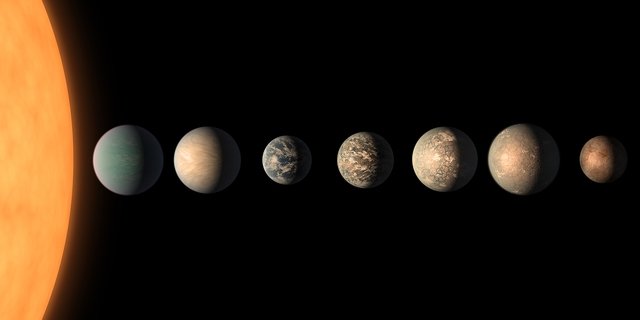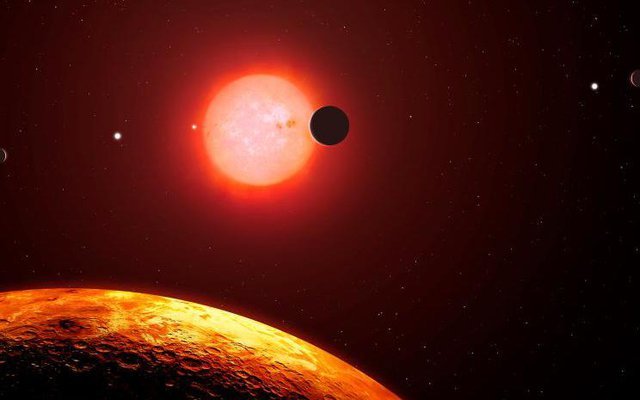According to the latest space news posted on the New York Post (USA), a group of international astronomers have discovered two new super-Earths orbiting an ultra-cold dwarf star just 100 light years away from Earth.
TWO SUPER-EARTHS FOUND NEAR THE SOLAR SYSTEM: ‘GOLDEN ZONE FOR LIFE’
These are two exoplanets that have been identified by the scientific community, one of which may have the necessary conditions for life to develop, or in other words, it is in the `habitable zone`.
The two exoplanets, named LP 890-9b and LP 890-9c respectively, were discovered quite close to us – only 100 light years, and they orbit the host star named LP 890-
Building on previous findings by NASA’s Transiting Exoplanet Survey Satellite (TESS), researchers at the University of Birmingham in the UK used their SPECULOOS telescope –
Accordingly, astronomers have important initial information about the two super-Earths as follows:
– The closest exoplanet to the host star is LP 890-9b, about 30% larger than Earth and quickly orbits the dwarf star in just 2.7 Earth days.
– The second exoplanet, called LP 890-9c, is slightly larger than LP 890-9b, and about 40% larger than our Earth;
Astronomers believe that this second planet (LP 890-9c) is in the `habitable zone` of its host star, where it is neither too hot nor too cold to support existence
According to astronomers, LP 890-9c’s daytime hemisphere receives about 90% of the heat and light our planet receives from the Sun.
To test this assumption, in the future, astronomers hope to use NASA’s James Webb Space Observatory to study this system.

Illustration of two super-Earths orbiting a red dwarf star.

Characteristics of stars and planets of the LP 890-9 system.
Not long ago, TESS was also instrumental in discovering two new super-Earths.
`The TESS space telescope searches for exoplanets (planets outside the Solar System) using the transit method, by monitoring the brightness of thousands of stars at once, looking for dimming spots
`TESS’s work is the first step. An equally important second step for astronomers is the follow-up with ground-based telescopes – often essential – to confirm the planetary nature of candidates
This follow-up work is especially important in the case of cool stars like LP 890-9 (host star of the two newly discovered super-Earths) because most of their light is recorded in the form of infrared rays,
That weakness of TESS is shared by the SPECULOOS project telescopes, which are located in Chile and on Tenerife, an island just west of Morocco.
THE SCIENTIFIC WORLD IS EXCITED FOR THE NEXT MISSION
`The goal of SPECULOOS is to search for potentially habitable planets orbiting certain stars,` said Michaël Gillon, an astronomer at the University of Liège and principal investigator of the SPECULOOS project.
Michaël Gillon compared the discovery of two super-Earths LP 890-9b and LP 890-9c orbiting the cool star LP 890-9 with the search for exoplanets in the TRAPPIST-1 system.

TRAPPIST-1 system.
Of the seven known exoplanets orbiting the TRAPPIST-1 system, three are in the `habitable zone,` which has made the TRAPPIST-1 system a prime target for astronomers.
And the fact that one of these newly discovered worlds occupies the habitable zone of host star LP 890-9 makes further investigation of this system equally intriguing.
`This allows us to make more observations and find out whether planet LP 890-9c has an atmosphere, and if it does, we will continue to study its nature and assess its habitability
Scientists will look for factors that contribute to life, such as the size and distance of the exoplanet from its host star, as well as the size and temperature of the host star itself.
`The habitable zone is a concept according to which a planet with geological and atmospheric conditions similar to Earth, would have a surface temperature that would allow water to remain in a liquid state for billions of years

Our Earth is in the Goldilocks zone.
Next, scientists hope to study the atmosphere of SPECULOOS-2c, possibly with JWST, which recently detected carbon dioxide in the atmosphere of an alien planet.
`It will be important to discover as many temperate worlds as possible to study the diversity of exoplanetary climates; and ultimately to understand the location to measure the frequency of biological occurrence in the universe
The team’s research was published Wednesday (September 6) in the journal Astronomy & Astrophysics.
The article uses sources: Universe Magazine, New York Post, Space










